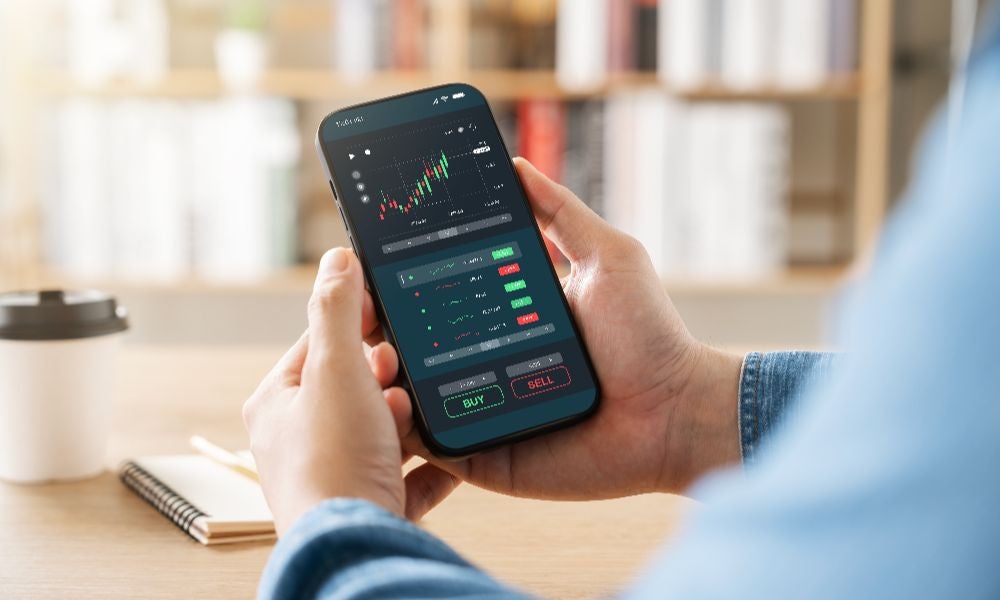How mobile apps rewired investor brains (but didn't boost returns)
While mobile trading apps reduce investment barriers, research has found they do not necessarily improve investor performance due to behavioural biases
Mobile trading apps transformed smartphones into stock exchanges, allowing users to buy and sell securities, monitor portfolios, access market data, and execute trades with taps and swipes. These applications delivered the functionality of desktop trading platforms while eliminating the constraints of location and operating hours that had defined markets for generations.
Adoption numbers reflected this shift in investor behaviour. Trading platform Robinhood, for example, has acquired about 26 million customers within a decade of launch, while Acorns attracted over 10 million users by positioning itself as the entry point for novice investors. These platforms democratised trading by reducing investment requirements, eliminating commission structures, and presenting instruments through user interfaces designed for smartphone screens.
Yet beneath this transformation lay a paradox that challenged conventional wisdom about technology and performance. While mobile apps delivered on their accessibility promises, their impact on investment outcomes remained unclear. The question persisted: did this revolution actually improve investor performance, or did it simply change how people lost money?

A study tracking over 20,000 investors across three years set out to answer this question. The research revealed that mobile trading apps created two opposing forces that had been invisible to both users and industry observers. While these platforms reduced barriers to trading, they simultaneously triggered behaviour changes that offset potential benefits. The findings uncovered why the mobile revolution in finance produced unexpected results that every business professional should understand.
When convenience meets complexity
The research examined investors from a securities firm between December 2012 and November 2015, capturing the moment when mobile trading launched in December 2013. This quasi-experimental setting provided researchers with a window into how technology adoption affects decision-making in conditions.
The research, published in Information Systems Research, was conducted by Sunil Mithas, a Visiting Professorial Fellow at UNSW Business School and Professor at University of South Florida's Muma College of Business, together with Associate Professor Che-Wei Liu from Arizona State University's W. P. Carey School of Business, Assistant Professor Yang Pan from Tulane University's A.B. Freeman School of Business, and Professor J. J. Po-An Hsieh from Georgia State University's Robinson College of Business.
Learn more: From status symbols to stock picks: What drives investment behaviour?
The study employed methods including generalised synthetic control techniques and propensity score matching to ensure robust findings. In their paper, Mobile Apps, Trading Behaviours, and Portfolio Performance: Evidence from a Quasi-Experiment in China, the researchers tracked transaction data, portfolio performance, and patterns across 20,665 investors, creating one of the analyses of mobile trading impact to date.
“The research was motivated by the rapid rise of mobile trading apps and the debate whether fintech could truly democratise investing by giving ordinary investors the same access and flexibility once reserved for professionals,” said Prof. Mithas, who explained that the research team set out to test whether this shift would translate into better results or simply change trading habits.
What surprised them was the paradoxical outcome: “Although mobile apps reduced barriers and made participation easier, the gains were offset by behavioural biases such as trend-chasing,” he said. “As a result, overall performance did not improve – challenging the assumption that greater access automatically benefits investors.”
The freedom trap: How apps reduced barriers but increased risk
Mobile apps delivered on their promise by reducing transaction friction. The access transformed trading from a desk-bound activity to something possible during lunch breaks, commutes, or moments between meetings. "Lunch breaks, commutes, and even idle moments between meetings now offer opportunities for trade, greatly reducing the inflexibility that was once a dominant component of transaction frictions,” the researchers noted.

This flexibility represented a breakthrough for professionals. The research demonstrated that mobile app adoption led to an 8.3% reduction in time constraints, effectively dismantling barriers that had previously limited trading opportunities.
However, the convenience that liberated investors from restrictions created an effect. The accessibility of mobile devices fostered what researchers termed "myopic decision making" – a tendency to focus on market movements rather than fundamentals. "The constant accessibility of mobile apps may further amplify the aforementioned myopic tendencies, ultimately undermining the investors' portfolio performance,” the researchers observed.
The performance paradox
Despite reducing barriers and increasing trading flexibility, mobile apps produced no statistically significant effect on portfolio performance. This finding emerged from the competing forces unleashed by mobile technology – the benefits of reduced friction were offset by the costs of increased trend-chasing behaviour.
The research revealed that mobile adoption increased trend-chasing bias by 2.1%, reflecting investors' tendency to make decisions based on price movements rather than analysis. The screens and computational limitations of mobile devices contributed to this pattern by making research more difficult and encouraging surface-level decisions.
Subscribe to BusinessThink for the latest research, analysis and insights from UNSW Business School
“Prioritising immediate market trends can also steer investors away from a deeper evaluation of an asset's intrinsic value, resulting in overbuying during price booms and underselling during downturns,” said Prof. Mithas, who suggested this behaviour pattern explained why the advancement failed to translate into financial outcomes.
The sweet spot: Why balance delivered results
Importantly, the research found that investors who balanced their usage between desktop platforms and mobile channels achieved better performance.
The study revealed an inverted U-shaped relationship between mobile usage intensity and portfolio performance. Investors who conducted approximately 50% of their trades via mobile apps – maintaining engagement with both desktop and mobile platforms – achieved the monthly performance gains of about 1.63%.
This finding challenged the assumption that more mobile usage automatically meant results. Instead, the combination of desktop capabilities with mobile responsiveness created synergy. "The analytical depth offered by PCs when combined with the real-time agility of mobile trading creates a robust trading ecosystem that is hard to replicate by either channel alone,” the researchers said.

The findings have important implications for both investors and the industry, according to Prof. Mithas. For individual investors, he said they suggest that the smartest strategy may not be to completely abandon one channel for the other, but to make a judicious use of desktops and mobile apps to combine analytical depth with ability to act swiftly when appropriate.
For financial institutions and app designers, Prof. Mithas said the research highlights the value of creating seamless cross-channel experiences that encourage balanced use, rather than pushing investors toward mobile exclusivity. “The findings can also prompt mobile platforms to consider designing features that temper impulsive decision-making – via prompts that promote reflection or through provision of deeper research tools. Doing so may help to realise the fintech’s promise of access democratisation without amplifying the risks of short-term, reactive trading,” he said.
Implications for investors
The research revealed insights for professionals managing their investment strategies. The notion that technology automatically produces outcomes proved overly simplistic. Instead, success required understanding how tools served purposes within an integrated approach.
For professionals experiencing transaction friction due to time constraints or limitations, mobile apps offered value by democratising market access. However, the research demonstrated that results came from using mobile platforms strategically rather than exclusively.
The findings suggest that professionals should consider mobile apps as tools for market responsiveness while maintaining desktop platforms for analysis and research. This dual-channel approach allowed for decision-making when opportunities arose while preserving the capability for analysis.
Learn more: Trust vs fees: What drives investor behaviour and decisions?
The implications extended beyond investment decisions to questions about workplace technology adoption. The study demonstrated that convenience and performance were not automatically linked, requiring organisations to carefully evaluate how tools affected decision-making quality alongside efficiency.
Prof. Mithas explained that the research points to a nuanced insight for investors: convenience alone does not translate into superior returns. “Mobile apps can lower barriers and open markets to a wider set of participants, but the real gains are likely to be realised by those who blend channels strategically,” he said.
“Investors who use mobile platforms for immediacy and responsiveness, while still turning to desktops for deeper research and long-term planning, are likely to achieve the strongest outcomes. The message is clear – fintech can democratise access, but superior performance depends on pairing the disciplined research via desktops with the autonomy and accessibility provided by mobile apps.”
